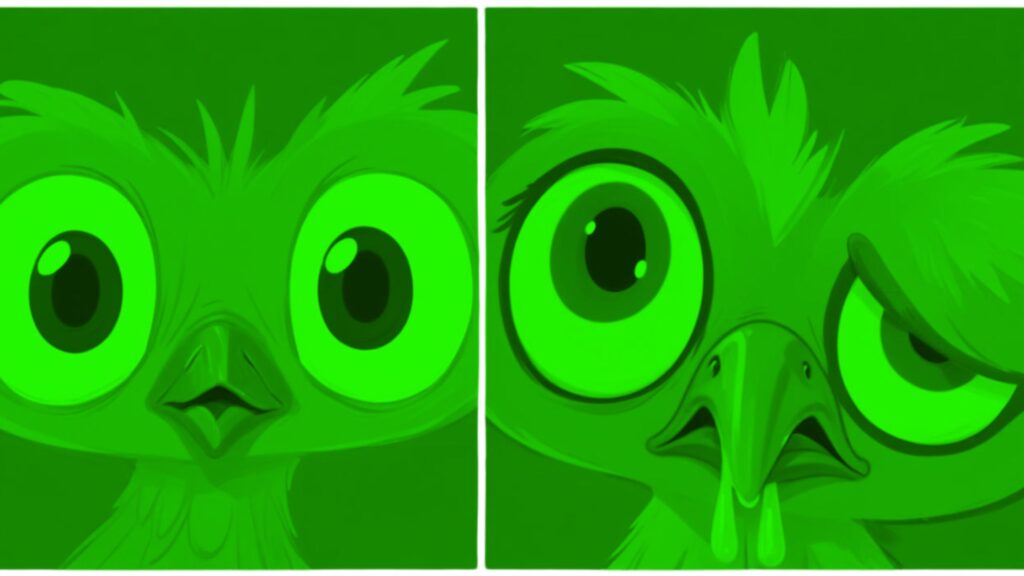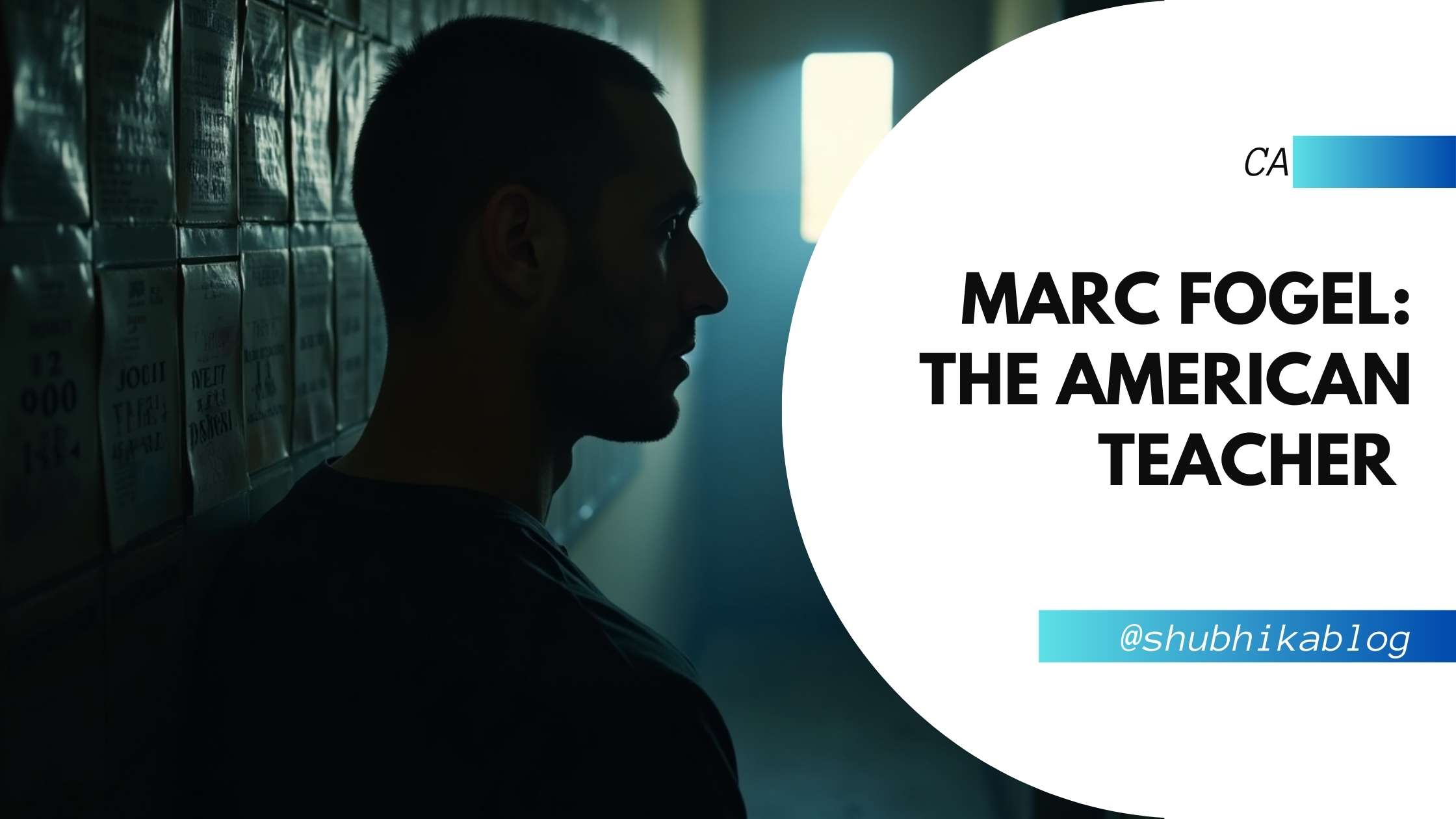In early 2025, a flurry of news articles and social media posts shocked the world: the legendary green owl from the language-learning app Duolingo had, allegedly, met an untimely demise.
For years, the Duolingo Owl—often referred to simply as “Duo”—had been the cheerful face of a global revolution in language education, pushing millions of people to complete their lessons daily with friendly reminders.
Now, with headlines screaming “duolingo owl death,” fans and casual onlookers alike found themselves asking: “Is this real? What does it mean for Duolingo?”
This comprehensive, story-driven article aims to explore every aspect of the duolingo owl death phenomenon in depth. We will examine the origins of Duo, the context behind these reports, the community reactions, official statements, and the future of the beloved language-learning app Duolingo.
Along the way, we will include references to major outlets, share frequently asked questions (FAQ), and offer an insight into how this entire story might impact the evolution of online education.
Whether you are a long-term Duolingo user, a language enthusiast, or someone who simply stumbled upon this bizarre saga, join us as we journey through the rise and fall of the Duolingo Owl.
1. The Birth of Duo: A Mascot’s Rise to Stardom
Before the term “duolingo owl death” ever appeared on any headline, there was an exciting beginning. The Duolingo Owl—affectionately known as “Duo”—first emerged in 2012 when Duolingo, the brainchild of Luis von Ahn and Severin Hacker, launched a new, free language-learning platform. From the start, the brand recognized that user engagement was crucial to sustaining a thriving educational community. Consequently, they decided to use a friendly mascot to represent the brand’s mission: to make learning languages accessible, fun, and effective.
Key Highlights of Duo’s Early Years:
- Playful Design: The owl’s bright green color was chosen for its visibility and unique appeal, standing out from typical educational brand colors.
- Gamification Pioneer: Duo’s friendly nudges and “reminders” often became internet memes, associating the Owl with a sometimes-overbearing accountability system.
- Global Recognition: Over time, the Duolingo Owl became synonymous with free language learning, appearing in advertisements, social media campaigns, and even real-life events.
Duo was more than a mere cartoon figure. For many, this little owl symbolized aspiration, tenacity, and the joy of mastering a new language. Its gentle encouragements through push notifications like “Time to practice!” and comedic presence in ads helped solidify Duolingo as the go-to platform for casual and serious learners alike.
Why an Owl?
Owls are commonly perceived as symbols of wisdom and knowledge worldwide. By choosing an owl, the language-learning app Duolingo hinted that learners could gain wisdom and skill in a playful but productive way. Over time, Duo soared beyond these initial goals, becoming a cultural icon—until rumors of its sudden demise unexpectedly rattled the internet.
2. Prelude to the “Duolingo Owl Death” Story

In the months leading up to what would become the “duolingo owl death” saga, Duolingo’s presence grew exponentially. The app had expanded to over 100 courses, spanning 40+ languages, and boasted over 500 million registered users. Its expansions into Duolingo ABC (for early reading skills) and Duolingo Math (a math-learning initiative) showcased a brand eager to revolutionize multiple facets of education.
Factors that Built Up the Suspense:
- Increased Press Coverage: As more people embraced language learning during the pandemic years, news outlets took greater interest in Duolingo’s impact, often spotlighting the company’s philanthropic efforts and unconventional marketing methods.
- Social Media Memes: Users playfully joked about Duo’s intense lesson reminders, creating a unique comedic brand around a normally benign concept: a daily language reminder. “You better do your Spanish lessons, or else…” became a running gag.
- Teasers and Hints: In late 2024, Duolingo’s marketing team posted cryptic social media messages featuring the Owl in ominous situations—like standing in a cemetery or wearing a black cloak—without any clear explanation.
What many initially dismissed as typical Duolingo humor started to raise eyebrows. Was the Owl simply part of a Halloween campaign, or was something more sinister brewing?
On February 11, 2025, everything changed. Major news outlets ran stories under sensational headlines, pronouncing the “death” of the Duolingo Owl.
3. Breaking News: Headlines from USA Today, CBS, and the Washington Times
The largest bombshells exploded when three reputable media sources—USA Today, CBS News Pittsburgh, and The Washington Times—each published stories confirming that Duo the Owl had been declared “dead.”
Key Points from the Headlines:
- “The Duolingo Owl is no more,” read the opening line from the USA Today piece, prompting shock and disbelief among fans.
- CBS News Pittsburgh, headquartered near Duolingo’s real-world offices, revealed insider conversations suggesting that it was an orchestrated move to permanently retire the brand mascot.
- The Washington Times, known for its direct style, carried the headline: “Language-learning app Duolingo kills Owl mascot.” This phrase hammered home the shocking nature of the news.
In a span of mere hours, these articles went viral. Social media accounts were awash with emotional eulogies and conspiratorial questions: Was the Owl truly dead, or was this a bizarre marketing ploy? Did Duolingo want to rebrand? Or was there something more behind the scenes?
The Immediate Aftermath:
- Worldwide Trend: Hashtags like #DuoIsDead and #RIPDuolingoOwl trended on Twitter (now known as X).
- Fan Art Flood: DeviantArt, Reddit, and Instagram erupted with fan art paying homage to the beloved green bird.
- Fear of Data Loss: Users worried about what this meant for their language progress, half-jokingly asking if their streaks would die with the Owl.
While it seemed inconceivable that such a cherished icon could simply vanish, official statements soon followed—some clarifying, others seemingly fueling the speculation further.
4. Community Reactions: Mourning, Speculations, and Memes

The reaction across the world to the duolingo owl death was swift and passionate. Within the Duolingo community, the news rippled through user forums, social media accounts, and local language meetup groups. The emotional outpouring—part genuine grief, part internet hyperbole—reflected how deeply ingrained Duo had become in so many people’s daily routines.
Mourning the Beloved Mascot
- Some longtime users literally wept on video streams or posted heartfelt tributes. These tributes often compared Duo’s presence in their lives to that of a supportive friend who diligently reminded them to study.
- Others composed original songs or poems commemorating the Owl’s guidance. On YouTube, the music video “Requiem for Duo” went viral.
Spiraling Speculations
The internet thrives on conspiracies, and the suddenness of the duolingo owl death fueled rampant theories:
- Corporate Shake-Up: Some believed a change in leadership prompted a shift away from the brand’s iconic image toward a more “professional” aesthetic.
- Mascot Overhaul: Another theory was that Duolingo planned to replace the Owl with a different character altogether, perhaps to emphasize advanced AI features in the app.
- Dark Humorous Marketing: Longtime fans recognized Duolingo’s quirky marketing style, suggesting that “killing” the Owl was just a stunt to drum up attention.
Meme Culture
No internet phenomenon is complete without memes. The Duolingo subreddit hosted a barrage of comedic posts:
- “Duo’s Funeral Service” event pages on Facebook ironically invited thousands of participants to “pay respects in full sentences.”
- TikTok influencers staged comedic “hauntings” from the Duolingo Owl, joking that he would now appear as a ghost to keep your language streak alive.
In mere days, the duolingo owl death went from obscure rumor to a front-page spectacle on multiple social and news platforms. The only question left was: Why?
5. Corporate Confirmations and Theories
As the community reeled from the news, Duolingo responded with statements that baffled some while clarifying key points for others. Their official Twitter (X) account posted a cryptic image of a headstone reading, “Here lies Duo, your loyal language companion,” with the caption: “Goodbyes are not forever… #DuoIsDead #Duolingo.”
Official Duolingo Statements
Press Release (February 12, 2025): Duolingo’s PR team issued a statement acknowledging the widespread coverage. They neither denied nor confirmed the Owl’s permanent death, but emphasized a “new chapter for the brand’s future.”
CEO’s Interview: In an interview with TechCrunch, Luis von Ahn vaguely referenced “exciting developments” that necessitated a change in branding. He declined to say whether “Duo was gone for good.”
The Leading Theories
A Rebranding Initiative: Some marketing analysts pointed out how big brands often retire old mascots to unveil new ones. They theorized that Duolingo was simply building anticipation for a more futuristic or AI-driven brand icon.
Stunt for Greater Visibility: Remember how Duolingo gained a reputation for comedic and edgy social media antics? By “killing” off their owl, they might be orchestrating one of the most elaborate marketing campaigns in recent memory.
Technological Shift: Observers noticed that Duolingo had been pouring resources into AI and machine learning. Was the Owl’s comedic persona incompatible with a new focus on advanced educational tools?
No matter the reasoning, official word from Duolingo remained intentionally vague. This fueled the public’s intrigue, shaping speculation into a near-obsession. The conversation roared, not just about the Owl’s fate, but about the future direction of the language-learning app Duolingo itself.
6. The Impact on the Language-Learning App Duolingo
The duolingo owl death saga had a profound effect on users’ daily habits, branding perceptions, and the broader edtech landscape. How did this rumored demise of an animated mascot influence the platform as a whole?
User Engagement and Streak Anxiety
- Initial Spike in Activity: Ironically, many users rushed back to the app to “save Duo” or ensure they didn’t lose their progress if the platform’s identity changed. This led to a temporary surge in lesson completions.
- Streak Preservation: One of Duolingo’s biggest gamified elements is the “streak.” After the news broke, message boards exploded with users asking, “Do we lose our streaks if the Owl is gone?” Duolingo’s support team reassured learners that the streak system was intact, Owl or not.
- Emotional Toll: A portion of the user base became disillusioned, feeling that Duolingo’s whimsical personality could vanish with the Owl, potentially leading to lower motivation.
Brand Perception
- Positive Curiosity: For some, the mysterious “death” generated excitement. They found Duolingo’s dark sense of humor refreshing and eagerly awaited what might replace the Owl.
- Negative Backlash: Others lamented the perceived disregard for user sentiment, seeing the Owl’s removal as insensitive or manipulative. They worried Duolingo might be pivoting toward a more corporate, less personal brand identity.
Rivals and Alternatives
The shocking headlines unwittingly offered a spotlight for competitor apps like Babbel, Rosetta Stone, and Busuu. While Duolingo maintained global dominance, social media quips from these rivals capitalized on the drama—some jokingly invited the “grieving” Duolingo users to try a platform where “the mascot lives forever.”
Ultimately, though, Duolingo retained its top position. But the duolingo owl death forced the company into the hottest possible spotlight, intensifying scrutiny on their next moves.
7. Was It All a Marketing Ploy? Examining the Possibilities
With so much speculation swirling, it’s worth asking the million-dollar question: Was the “duolingo owl death” simply a marketing ploy?
Clues Suggesting a Carefully Planned Strategy
Timing: The story broke shortly after Duolingo’s major announcements about new features and expansions. This alignment of events seemed too convenient to be coincidental.
Humorous Precedent: Duolingo has a long track record of comedic social media stunts. The brand’s Twitter account historically teases users with comedic “threats” if they skip lessons. Retiring or “killing” the Owl could be the pinnacle of this irreverent approach.
Viral Impact: Digital marketing experts agree that the quickest way to go viral is to spark strong emotional responses. By claiming the Owl’s death, Duolingo evoked shock, sadness, and curiosity—generating massive free publicity.
Arguments Against a Purely Marketing-Driven Hoax
Risk of Alienation: Such a drastic measure risks alienating loyal users, tarnishing trust and brand affinity. Would Duolingo really jeopardize its beloved “teacher figure” for a short-term PR stunt?
Seriousness of News Outlets: Reputable news sources such as USA Today, CBS, and The Washington Times covered the Owl’s death, citing official confirmations from Duolingo insiders. Unless everyone was in on it, the story’s seriousness might suggest deeper corporate motives.
Lingering Uncertainty: If it were simply a ploy, Duolingo might have capitalized on the hype sooner with clarifications or a new mascot unveiling. Instead, the brand maintained an enigmatic stance, fueling confusion.
Whether marketing stunt or genuine brand evolution, the duolingo owl death undeniably captured global attention. The question remains: how will Duolingo harness this attention, and what does life after Duo look like?
<a name=”exploring-the-future”></a>
8. Exploring the Future of Duolingo Without Duo
One point in which nearly everyone agrees is that Duolingo is likely evolving. The question is: How? If the beloved Owl is truly gone, or if it resurfaces in a different form, what can we anticipate from the language-learning app Duolingo moving forward?
Potential New Mascot
AI Characters: Duolingo’s push into AI-driven lessons could herald a futuristic avatar or a robotic guide, emphasizing the platform’s cutting-edge technology.
Multiple Mascots: Some speculate that Duolingo might offer a suite of characters for each language or subject area—imagine a menagerie of cute critters for Spanish, French, German, or even Duolingo Math.
Hybrid Approach: Another possibility is that the Owl returns but in a new design—maybe less cartoonish and more sophisticated, aligning with Duolingo’s advanced language-learning features.
Evolving User Interface and Features
Adaptive Learning: The next evolution of Duolingo might lean heavily on personalization, using AI to tailor lessons specifically to each user’s weaknesses and strengths.
Community Involvement: With or without the Owl, Duolingo’s user forums, clubs, and community events remain a powerful resource for learners who seek motivation from peers.
Gamified Ecosystem: The platform could deepen its gaming elements, introducing more challenges, quests, or “achievements” that keep learners hooked, possibly overshadowing the need for a single mascot.
Broader Educational Vision
Duolingo has always aimed to democratize education globally, starting with languages. Recent expansions into reading (Duolingo ABC) and math (Duolingo Math) hint at a future where Duolingo might become a one-stop learning hub for multiple subjects.
Even if the Owl is gone, the brand identity that once centered on a friendly green bird may transform into something broader and more multifaceted, reaching corners of education not previously imagined.
9. Lessons Learned from the Duolingo Owl’s Demise
It might seem odd to speak of “lessons learned” from the fictional or real passing of a cartoon character. But the duolingo owl death touched on marketing, brand loyalty, user psychology, and the evolving nature of online learning in surprisingly profound ways.
The Power of Mascots
Mascots are more than marketing fluff. They become avatars of a brand’s culture and values, forging emotional connections with users. Duo’s demise highlights how deeply a mascot can influence user loyalty and brand recognition.
Emotional Engagement
Duolingo’s approach, whether genuine or orchestrated, demonstrated how emotional hooks—like the shock of a “death” announcement—can generate huge public discourse. This method, however, walks a fine line between boosting brand reach and potentially alienating the user base.
Community-Centric Platforms
The outpouring of grief, memes, and tributes showed the depth of Duolingo’s community. When people invest time, effort, and feelings in a shared digital space, even comedic stunts around a mascot’s passing can spark intense dialogues.
Adaptation and Change
Technology and user preferences evolve. The “death” might be a metaphor for the brand’s readiness to shed old skins and adapt to new educational paradigms. As edtech grows increasingly sophisticated, Duolingo’s next move could set the standard for evolving brand identities.
The Importance of Transparency
While marketing stunts can be effective, they also risk fueling confusion when official statements remain vague. Striking a balance between teasing future developments and maintaining user trust is crucial in today’s digital age.
10. FAQs about the “Duolingo Owl Death”
Below are frequently asked questions to address common curiosities surrounding the duolingo owl death phenomenon. These questions and answers are purely informational and based on the media coverage and statements available as of the time of writing.
Did Duolingo officially confirm the Owl’s death?
– Multiple news outlets, including USA Today and CBS News, reported official confirmations from Duolingo staff. However, Duolingo’s public statements remain cryptic, neither fully denying nor confirming Duo’s permanent end.
Why would Duolingo “kill off” its mascot?
– Possible reasons include rebranding, generating publicity, or aligning with a new direction centered on AI-based learning. Without clear official explanation, theories range from marketing tactics to deeper corporate shifts.
Is my language progress or streak in danger?
– No. Duolingo support clarified that user data, streaks, and lesson progress remain unaffected by the Owl’s fate.
Was this a hoax or a publicity stunt?
– While the viral nature of the story suggests a potential marketing angle, there’s no definitive proof it was a hoax. The coverage in reputable media implies a genuine corporate decision or at least a well-orchestrated reveal of upcoming changes.
What happens next for Duolingo?
– Users expect changes in branding or new mascot announcements, especially given Duolingo’s move into diversified educational apps like Duolingo ABC and Duolingo Math. The future could reveal a new era for the brand.
Will Duolingo replace the Owl with another character?
– Rumors abound about an AI-driven mascot or multiple mascots for different subjects. However, Duolingo has yet to provide details on any direct replacement for Duo.
How can I stay updated on further developments?
– Follow Duolingo’s official social media channels, regularly check their blog, and watch reputable news outlets for updates. Additionally, community forums like Reddit are often quick to share any fresh revelations.
Is Duolingo still free after the Owl’s death?
– Yes, the core language-learning functionality remains free, with optional premium subscriptions and other paid features. The brand’s primary mission of free access to language education endures.
11. References
- USA Today – “Duolingo’s Duo Owl Found Dead”
- CBS News Pittsburgh – “Duolingo Owl Dead”
- The Washington Times – “Language-learning App Duolingo Kills Owl Mascot”
(Note: All links and references mentioned are provided for informational purposes, reflecting the coverage at the time of writing.)
12. Conclusion
The phrase “duolingo owl death” may sound like something pulled straight from a satirical news site. Yet, it swiftly became one of the biggest viral discussions of early 2025, capturing the imaginations of both dedicated Duolingo learners and casual observers. This saga highlighted the extraordinary power of online communities, the emotional resonance of brand mascots, and the ever-shifting strategies employed by major tech companies to keep audiences engaged.
Perhaps the greatest lesson from the duolingo owl death is that change—no matter how startling—can serve as a catalyst for conversation, creativity, and community bonding. The Duolingo Owl, whether genuinely retired or temporarily sidelined, will live on in internet lore. And for those millions of learners who open the app every day to practice Spanish, French, Japanese, or any other language, Duo’s presence remains, if not on our screens, then in the playful memory of a helpful guide that made language learning a bit more entertaining.
Despite the unanswered questions, one thing is certain: Duolingo continues to shape the way people worldwide approach language education, forging new paths in online learning. Whether or not the Owl returns in another form, the company’s mission—to make education fun, accessible, and effective—stands strong. And so, in the same spirit the Owl once reminded us each day, we might say: Never forget to do your lessons. Even when the Owl rests in peace, the knowledge lives on.











Leave a Reply